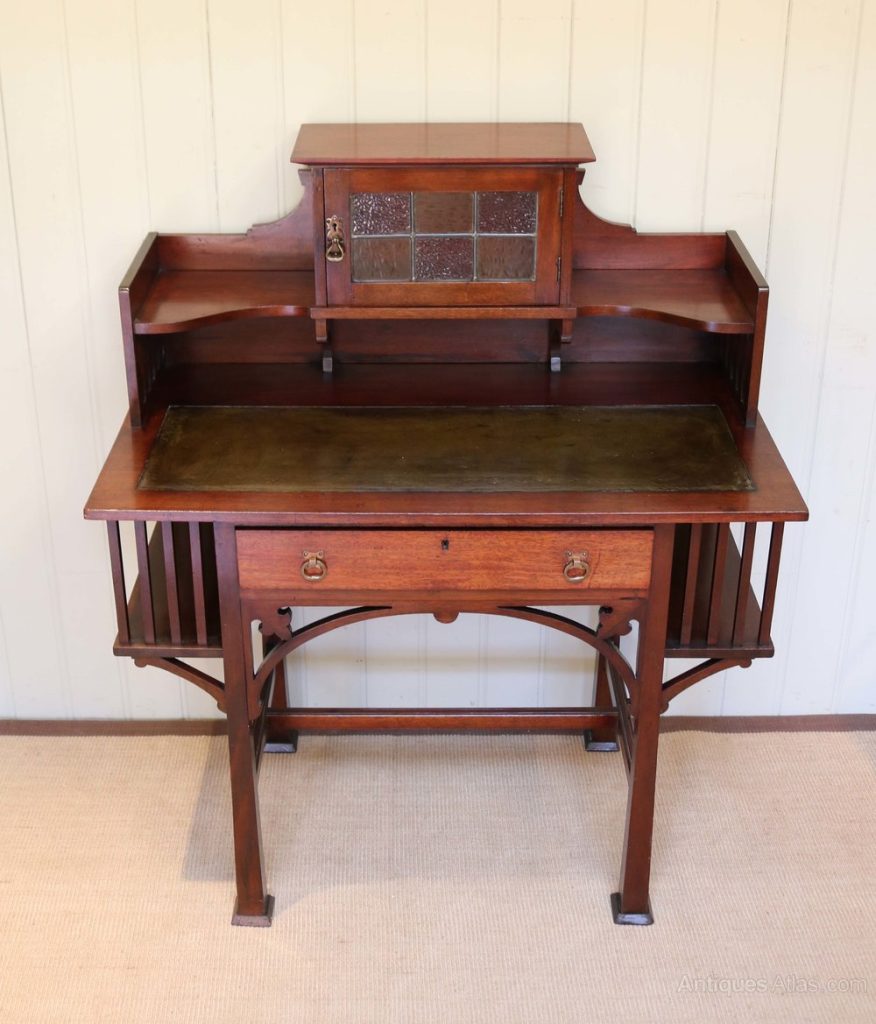Part 1: The Enduring Appeal of Arts & Crafts Furniture
Arts and Crafts furniture holds a timeless elegance that has captivated admirers for over a century. In this article, we will explore the enduring appeal of this furniture style, highlighting its distinctive features and its significant influence on interior design.
Point 1: Emphasis on Craftsmanship and Quality
Arts and Crafts furniture emerged in the late 19th century as a response to the industrialization and mass production of the era. Craftsmen and designers sought to revive the value of craftsmanship and emphasize the quality of handcrafted pieces. Each piece of Arts and Crafts furniture is meticulously crafted, paying attention to every detail, from the selection of materials to the hand joinery and intricate decorative elements. This dedication to craftsmanship results in furniture that not only looks beautiful but also stands the test of time.

Point 2: Natural Beauty and Simplicity
Arts and Crafts furniture is known for its emphasis on the natural beauty of wood and a simple, unadorned aesthetic. The pieces often showcase the distinctive grain patterns and textures of the wood, celebrating its inherent qualities. The furniture designs are characterized by clean, straight lines, with minimal embellishments. Simple geometric shapes, such as squares and rectangles, are prevalent, creating a sense of harmony and balance. This simplicity and focus on the beauty of natural materials give Arts and Crafts furniture a timeless elegance that seamlessly integrates into various interior styles.
Part 2: Key Features of Arts & Crafts Furniture
To truly appreciate the beauty of Arts and Crafts furniture, it is essential to understand its key features and design elements.
Point 1: Exposed Joinery and Handcrafted Details
One of the defining characteristics of Arts and Crafts furniture is the prominent display of exposed joinery. Instead of concealing the construction elements, such as dowels or mortise and tenon joints, these details are intentionally showcased, becoming decorative elements in their own right. This emphasis on visible joinery highlights the craftsmanship and adds to the overall aesthetic appeal of the furniture.
Additionally, Arts and Crafts furniture often features handcrafted details, such as carved panels or decorative inlays. These intricate elements are meticulously crafted by skilled artisans, adding visual interest and depth to the furniture pieces.

Point 2: Functionality and Practicality
Designers of Arts and Crafts furniture emphasize functionality and practicality when creating the pieces for everyday use and enjoyment. Furniture designers of the Arts and Crafts movement believed that well-designed furniture should serve a purpose and enhance the functionality of a space.
Incorporating elements like built-in storage, adjustable shelves, and practical features, Arts and Crafts furniture seamlessly combines beauty and utility. This focus on practicality ensures that each piece not only adds visual appeal but also serves its intended purpose effectively.
Part 3: Influence on Interior Design
The impact of Arts and Crafts furniture extends beyond individual pieces, shaping the overall approach to interior design.
Point 1: A Shift Towards Simplicity and Natural Materials
The impact of the Arts and Crafts movement on interior design cannot be overstated. This influential movement sparked a significant shift in aesthetic preferences, moving away from the opulence and ornamentation of the Victorian era. Instead, it embraced a more authentic and unpretentious approach to design.
The movement’s emphasis on simplicity and a connection to nature had a profound impact on interior spaces. Exposed wood became highly sought after, showcasing the natural beauty and integrity of the material. Earthy color palettes, reminiscent of nature’s hues, gained popularity, creating a warm and organic ambiance within homes.

In addition to materials like wood, other natural elements such as leather, copper, and stained glass also found favor in Arts and Crafts-inspired interiors. These materials added depth, texture, and richness, further emphasizing the connection to the natural world.
By embracing simplicity, natural materials, and a connection to nature, the Arts and Crafts movement revolutionized interior design, setting the stage for a more harmonious and authentic approach to creating living spaces.
Point 2: Integration of Craftsman Aesthetics
Arts and Crafts furniture was often designed to be in harmony with the architectural style of homes. The movement embraced the idea of a total design concept, where furniture, architecture, and decorative elements worked together to create a cohesive and unified space. This integration of Craftsman aesthetics into the overall design ethos brought a sense of unity and consistency to interior spaces, contributing to a warm and inviting atmosphere.
Part 4: Contemporary Appreciation and Revival
While Arts and Crafts furniture experienced a decline in popularity during the mid-20th century, it has seen a significant revival in recent decades, with a renewed appreciation for its timeless elegance.
Point 1: Collectibility and Investment Value
Original Arts and Crafts furniture pieces crafted by renowned designers and manufacturers have gained immense popularity among collectors and enthusiasts. These exquisite pieces are highly sought-after due to their exceptional craftsmanship, historical significance, and limited availability.

The meticulous attention to detail, the use of high-quality materials, and the timeless design aesthetic of original Arts and Crafts furniture contribute to its collectibility and investment value. Owning a piece of this furniture has become a symbol of status and a testament to refined taste.
As the demand for original Arts and Crafts furniture increases, the limited supply further drives its value. These pieces are considered not only functional furniture but also works of art that embody the ideals and principles of the Arts and Crafts movement.
Collectors and enthusiasts recognize the historical and artistic significance of these furniture pieces, making them highly desirable and valuable additions to any collection. The enduring appeal and scarcity of original Arts and Crafts furniture drive a market where collectors and enthusiasts cherish these pieces not only for their beauty but also for their potential as long-term investments.
Point 2: Contemporary Adaptations and Inspirations
The enduring appeal of Arts and Crafts furniture has also inspired contemporary designers and furniture makers. They draw inspiration from the principles of the movement, incorporating its design elements and philosophy into their own creations. This blending of traditional craftsmanship with modern sensibilities allows for the creation of new pieces that pay homage to the timeless beauty of Arts and Crafts furniture while adapting to contemporary lifestyles and design preferences.
In conclusion, Arts and Crafts furniture continues to enchant with its timeless elegance. It emphasizes craftsmanship, simplicity, and a connection to nature. Its enduring appeal and influence on interior design are evident. The emphasis on natural materials and exposed joinery stands out. Functionality and the integration of Craftsman aesthetics are also notable. With a revival of appreciation and contemporary adaptations, this furniture style remains a symbol of refined taste. It is a testament to the enduring value of craftsmanship and design excellence.
